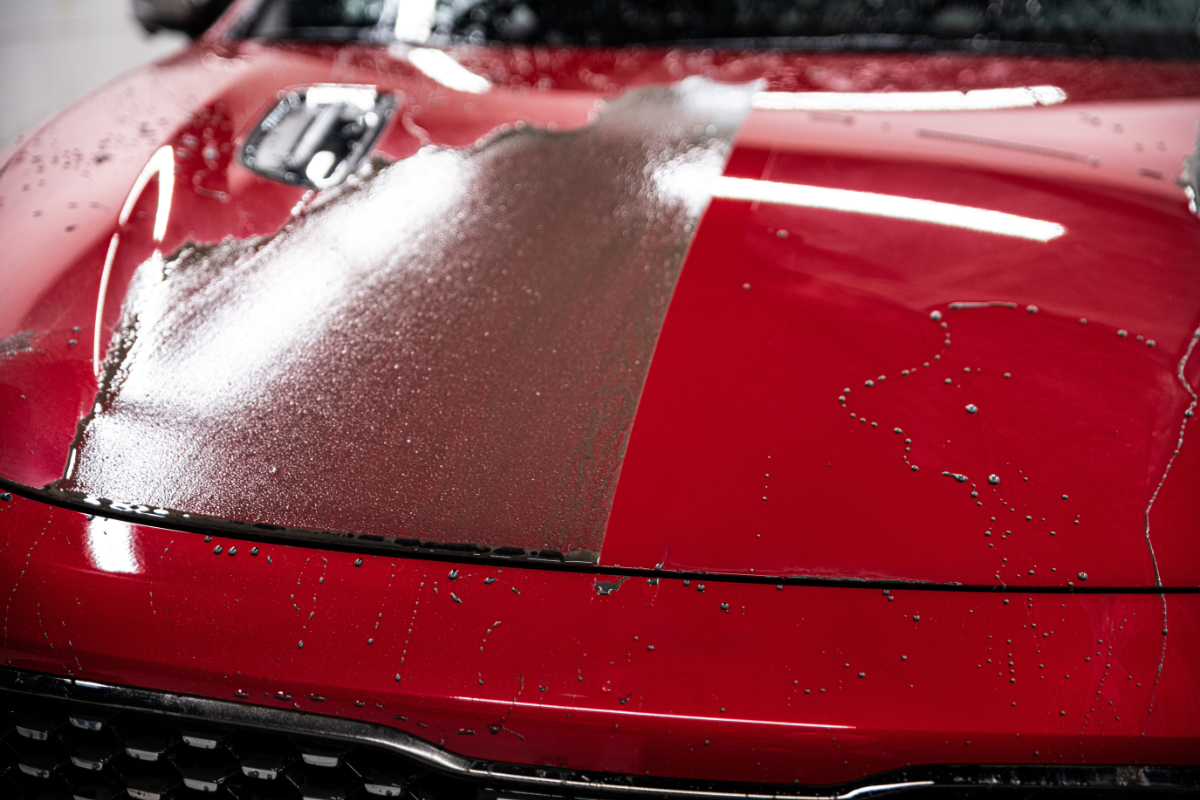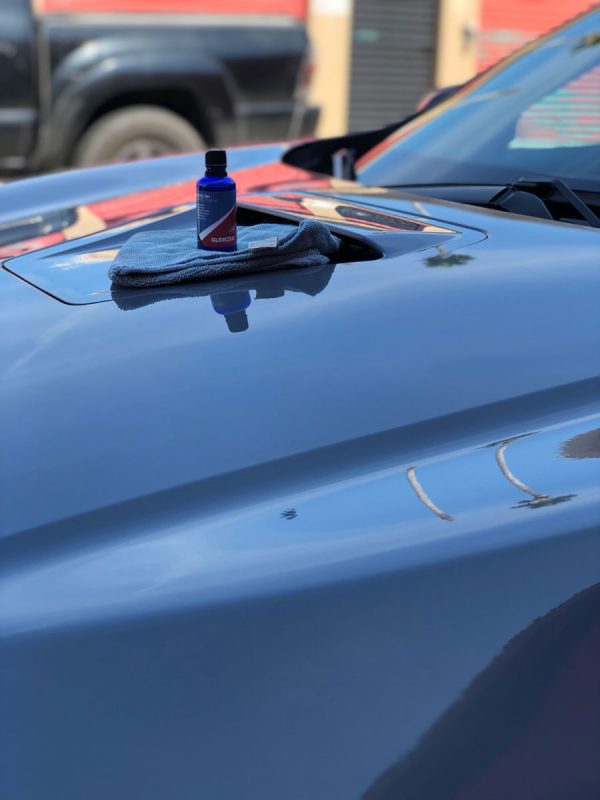The Value of Ceramic Coating: Securing Your Automobile's Exterior With Accuracy
In an age where preserving the aesthetic and functional integrity of your lorry is extremely important, ceramic coating becomes a critical solution. This safety layer not only defend against ecological adversities yet likewise elevates the visual allure of your automobile. With its unique bonding homes, ceramic covering uses a degree of protection that much exceeds conventional waxing methods. Yet, just how precisely does it attain such amazing results? As we discover the subtleties of its application and compare it to various other alternatives, one can not aid but question about the specifics that make this innovation important for modern-day car treatment.
Benefits of Ceramic Coating
When it comes to maintaining an automobile's aesthetic appeal, ceramic finishing provides significant benefits. By creating a semi-permanent bond with the lorry's paint, ceramic layers properly stop oxidation and fading, making sure that the automobile keeps a shiny, showroom-like surface for a prolonged period.
In enhancement to its protective top qualities, ceramic finish uses amazing hydrophobic buildings, triggering water and other fluids to grain off effortlessly. This feature streamlines the cleaning procedure, as dust and debris are less most likely to comply with the surface area, decreasing the frequency and initiative required for upkeep. Moreover, the finishing's resistance to chemical stains from acidic impurities like bird droppings and tree sap is one more noteworthy benefit, minimizing prospective paint damages.
Ceramic finishes also improve scrape resistance, offering a layer that can soak up small abrasions and swirl marks. This quality is particularly valuable in maintaining an excellent surface area, lowering the possibility of noticeable imperfections and protecting the integrity of the automobile's paintwork with time.

Exactly How Ceramic Layer Works
Comprehending the mechanics behind ceramic finishing exposes its efficiency as a safety solution for vehicles. Ceramic coverings are basically fluid polymer applications that chemically bond with a vehicle's factory paint, creating a protective layer. This layer serves as a barrier against environmental contaminants such as grime, dirt, and ultraviolet rays, which can weaken an automobile's exterior in time. The crucial element in ceramic covering is silicon dioxide (SiO2), which originates from quartz crystals and is known for its outstanding solidity and longevity.
Application of ceramic finishing involves a precise process. The lorry's surface area need to be thoroughly cleansed and decontaminated to guarantee optimum bond. As soon as used, the liquid polymer creates a semi-permanent bond with the paint, solidifying into a clear, resilient guard. This guard enhances the automobile's gloss and hydrophobic properties, helping with less complicated cleansing by triggering water and impurities to bead and slide off easily.
Furthermore, the covering's molecular structure provides resistance to small scrapes and chemical spots. Unlike waxes or sealers that sit on top of the paint, ceramic layers integrate with the surface, supplying lasting security. This assimilation is basic to its effectiveness, ensuring the vehicle's surface stays immaculate for many years.
Contrasting Ceramic Coating to Alternatives
In the realm of automobile security, ceramic finish stands as a formidable option when contrasted to traditional choices such as waxes and sealants. While waxes provide a momentary shiny surface, normally lasting just a couple of weeks to months, ceramic finishes offer a longer-lasting option, commonly withstanding for many years. This toughness is credited to the chemical bonding that happens when ceramic coatings are applied, creating a strong layer that is resistant to environmental risks.
Contrastingly, sealants, although even more resistant than waxes, still drop short of the robust protection supplied by ceramic layers. Sealers can generally last for approximately a year, providing an artificial guard against particular components. They lack the premium hydrophobic buildings and UV security that ceramic coverings supply.
Furthermore, ceramic layers use enhanced scrape resistance, which neither waxes nor sealers can successfully match (ceramic coating). This is particularly beneficial in keeping an auto's beautiful appearance. Furthermore, ceramic coatings streamline maintenance initiatives by decreasing the adherence of dust and over here grime, therefore assisting in easier cleansing. In summary, while typical waxes and sealants use basic security, ceramic layers provide a thorough, long-lasting option that significantly improves and maintains the vehicle's exterior surface.
Application Refine Clarified
Using ceramic layer to a lorry calls for a thorough procedure to make certain ideal results and durability. As soon as cleaned up, the car is dried out and polished to eliminate any kind of flaws, as any kind of existing swirls or scratches can come to be a lot more pronounced after the layer is applied.
Adhering to surface area preparation, the application of the ceramic finish begins. The layer is normally applied in a climate-controlled setting to prevent dirt particles from resolving on the freshly cleansed surface. Utilizing an applicator pad, the ceramic finish is applied in small areas to make sure even coverage. It is necessary to comply with the manufacturer's standards concerning the ideal treating time and application density.
After application, a fantastic read the layer requires a specific treating duration, throughout which the vehicle ought to be secured from water and impurities. This healing process can vary depending upon the item yet generally ranges from 24 to two days. Eventually, this thorough procedure is pivotal in achieving a shiny and durable surface.
Upkeep Tips for Longevity
To maintain the durability of a ceramic layer, adherence to a disciplined maintenance routine is vital. Normal cleaning is critical; utilize a pH-neutral cars and truck shampoo and soft microfiber mitts to stay clear of abrasions. Avoid automatic vehicle washes, as their extreme brushes can endanger the layer's honesty. Rather, decide for a hand laundry to make sure detailed yet mild cleansing.
Post-wash, drying the lorry with a tidy microfiber towel avoids water spots that might weaken the finish with time. In addition, apply a ceramic coating booster every couple of months. These boosters strengthen the hydrophobic buildings and boost the covering's protective capacities, ensuring it remains efficient against impurities.
Remember that auto parking locations play an important role in upkeep. ceramic coating. Whenever possible, park in shaded locations to reduce UV exposure, which can gradually deteriorate the finishing. For long-term storage, take into consideration utilizing an auto cover for included defense against ecological elements
Final Thought
In conclusion, ceramic finishing offers as a critical protective layer for car outsides, supplying long-lasting protection against ecological aspects such as crud, dust, and uv rays. Comprehending the application process and find out here adhering to maintenance recommendations are crucial for optimizing the long life and performance of ceramic layer.
When it comes to protecting an auto's visual charm, ceramic finish uses considerable advantages. By forming a semi-permanent bond with the lorry's paint, ceramic coverings efficiently prevent oxidation and fading, ensuring that the auto keeps a glossy, showroom-like finish for an extended duration. Ceramic finishes are basically liquid polymer applications that chemically bond with a vehicle's manufacturing facility paint, developing a protective layer. In recap, while typical waxes and sealers use basic security, ceramic finishings offer an extensive, lasting remedy that substantially boosts and maintains the car's outside coating.
